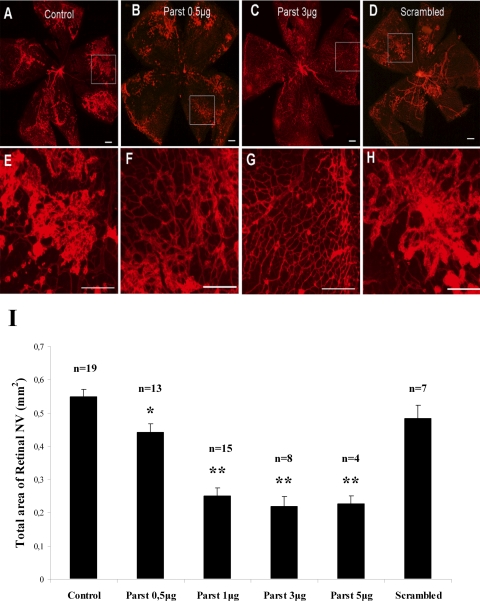Figure 2.
Intravitreal injections of parstatin suppress oxygen-induced retinal neovascularization. Newborn mice were placed in 75% oxygen at P7. At P12, they were returned to room air. Intravitreal injections of indicated doses of parstatin (parst), vehicle (control), or scrambled parstatin (scrambled, 10 μg) were administered on P12 and P15. At P17, mice were treated with G. simplificolia isolectin B4–589. Compared with control retinas (A, E), those treated with 0.5 μg (B, F) or 3 μg (C, G) parstatin showed proportionally fewer areas of retinal neovascularization. Retinal neovascularization in retinas treated with scrambled parstatin (D, H) was similar to that observed in control mice. (E–H) Higher magnification images of the boxes in (A) to (D), respectively. Scale bar, 200 μm. (I) Total area of neovascularization (NV) at each retina site was measured by image analysis. Results are expressed as mean areas (mm2) of retinal neovascularization ± SE for each group calculated from indicated number (n) of eyes. Statistical analysis was performed compared with control group. *P < 0.05; **P < 0.01.

